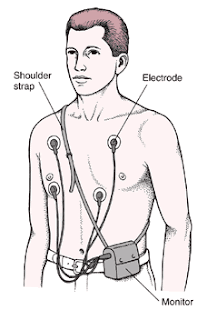Hepatitis
simply refers to inflammation and/or injury of the liver. There are many causes
of hepatitis -- too many to list here. The most common causes of hepatitis
include infections (viral being the most common, but also bacterial and fungal),
alcohol abuse, medications (certain over-the-counter and prescription
medications can lead to liver injury), autoimmune disorders and fatty deposits
in the liver, such as those that may form in diabetic patients.
Causes of acute hepatitis
-Viral
hepatitis
Non Viral
hepatitis-
-Viral hepatitis
Hepatocyte
specific virus A, B, C. D
no Hepatocyte specific virus
virus hepatitis A –HAV-
When
most people refer to hepatitis, they are probably talking about viral
hepatitis, which is classified into several types. Hepatitis A, which is very
common in underdeveloped countries, is acquired from water or food sources.
This type of hepatitis is usually mild and may sometimes be discovered only by
blood testing. Hepatitis A never leads to chronic liver disease.
Hepatitis
A is caused by eating food and drinking water infected with a virus called HAV.
It can also be caused by anal-oral contact during sex. While it can cause
swelling and inflammation in the liver, it doesn't lead to chronic, or life
long, disease. Almost everyone who gets hepatitis A has a full recovery.
it accounts 20-25%
of clinical hepatitis -
Incubation
period:15-50 days
-Clinical manifestation :
May
patient are an citric and symptom less
Flea
like upper respiratory tract infection.
Anorexia
on early symptom and is often sever.
Later on
jaundice and dark urine.
Marked
vague epigastria and hypochonderum pain
Nausea
heart burn.
Diagnosis lab-
Raised
liver enzymes.
Bilirubin
and bilurbincere in urine.
Raised
severe bilrbine total and direct and of mixed type.
HAV antibodies(HAVIGM)
in the serum
Prevention-
Body
health education ,hygiene.
Vaccination
-Management:
Bed rest
and diet regime (casohychites).
With
restriction of animal protein.
iv. plain
5% glucose in care of sever vomiting and sever anorexia.
hepatitis B virus-HBV-
The
hepatitis B virus is most often contracted via blood contact -- such as with IV
drug abusers sharing needles or health care workers who are stuck by tainted
needles. It can also be spread via sexual contact and from mother to baby
during childbirth. And can lead to
chronic liver disease and the complications that result from it
With
hepatitis B, the liver also swells. Hepatitis B can be a serious infection that
can cause liver damage, which may result in cancer. Some people are not able to
get rid of the virus, which makes the infection chronic, or life long. Blood
banks test all donated blood for hepatitis B, greatly reducing the risk for
getting the virus from blood transfusions or blood products.
-Made of transmission
Which is
transmitted primarily by the fecal- oral rout, hepatitis B is transmitted primarily
by sexual act.
-Incubation period: long 1p
from 6weeks to 6 months
-Risky people:
Medical
staff ,surgeon ,gynecology ,dentists.
Para medical
staff, lab, worker.
Nurses.
Addicts ,drug
abusers.
Potions
in hemodylessia and oncology.
Homosexual
and bisexual men.
-Clinical manifestation:
Loss of
appetite, dyspenia, abdominal pain ,weakness
Jaundice
may or may not be evident but of jaundice occurs, it is accompanied by light
colored stools and dark urine.
Liver
may be tender and enlarged,.
Prevention:-
Preventing
transmission.
Continudued
screening of potential blood donors for the presence of hepatitis B
Antigens
using of deposable syringes and needles.
Medical management-
The goal
of treatment are to minimize infectivity. Normalize liver inflammation, and
decrease symptoms.
Alfa
interferon:3000,000 , 5000,000 with3 injections/ month. Can be helpful.
Bed rest
,diet regime, high caloric nutrition , restrictions high animal protein food.
Hepatitis C virus: (HCV)-
Hepatitis
C is spread via blood and body-fluid contact (as with Hepatitis B). Hepatitis C
used to be the most common type of hepatitis acquired via blood transfusions
until a test for it became available in the 1980s. Hepatitis C commonly leads
to chronic hepatitis and over many years can lead to chronic liver disease
manifested by cirrhosis
Hepatitis
C is caused by the virus HCV. It is spread the same way as hepatitis B, through
contact with an infected person's blood, semen, or body fluid. Like hepatitis
B, hepatitis C causes swelling of the liver and can cause liver damage that can
lead to cancer. Most people who have hepatitis C develop a chronic infection.
This may lead to a scarring of the liver, called cirrhosis. Blood banks test
all donated blood for hepatitis C, greatly reducing the risk for getting the
virus from blood transfusions or blood products.
Incubation
period, variable and may rang from 15 – 160 days.
Hepatitis D virus HDV
-Hepatitis D is caused by
the virus HDV. You can only get hepatitis D if you are already infected with
hepatitis B. It is spread through contact with infected blood, dirty needles
that have HDV on them, and unprotected sex (not using a condom) with a person
infected with HDV. Hepatitis D causes swelling of the liver.
-Non viral hepatitis:
Toxic
hepatitis lead to Toxemia infection
Drug
induced hepatitis : paracetamal larga; etil.















